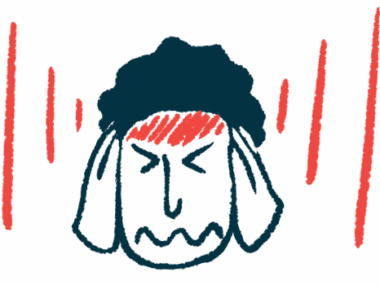NMOSD, MOGAD Medical Care Maintained in COVID-19 Pandemic
187 patients seen at 19 NEMOS centers in Germany, Austria were surveyed
Written by |

Access to care and the use of healthcare services during the COVID-19 pandemic were generally kept up in people affiliated with specialized centers in Germany and Austria who had neuromyelitis optica spectrum disorder (NMOSD) and myelin oligodendrocyte glycoprotein antibody disease (MOGAD), a study showed.
Moreover, “patients’ satisfaction with medical care and [health-related quality of life] did not decrease,” the researchers wrote in the study, “Effects of the COVID-19 Pandemic on Patients With NMO Spectrum Disorders and MOG-Antibody–Associated Diseases,” which was published in Neurology: Neuroimmunology & Neuroinflammation.
NMOSD and MOGAD are autoimmune diseases caused by abnormal antibodies that wrongly attack cells of the central nervous system (the brain and spinal cord). In both disorders, the optic nerve, which sends signals between the eye and the brain, is affected.
In NMOSD, the most common target of these abnormal antibodies is aquaporin-4 (AQP4), a protein that carries water across the membranes of neuron-supporting cells. MOGAD is marked by the presence of antibodies against myelin oligodendrocyte glycoprotein (MOG), part of the myelin sheath that surrounds nerve fibers.
Both NMOSD and MOGAD lead to severe disability and because most patients receive long-term immunosuppressive treatments to reduce immune system activity and prevent relapses, they’re at increased risk for infections.
During the COVID-19 pandemic, general restrictions to prevent and manage SARS-CoV-2 infections posed a challenge to medical care for NMOSD and MOGAD patients.
A previous study in China showed that fear of infection during the early pandemic often led to postponing appointments, changing or cancelling rehabilitation plans, and discontinuing immunosuppressive treatments.
NMOSD, MOGAD patients respond to effects of pandemic on care
Very little data on the pandemic’s effect on central European NMOSD and MOGAD patients’ medical care, quality of life, and satisfaction is available, however, which led researchers from the German-wide Neuromyelitis Optica Study Group (NEMOS) to develop a questionnaire about its burden on them.
A total of 187 NMOSD and MOGAD patients seen at 19 German and Austrian NEMOS centers completed the questionnaire between July 2021 and March 2022.
These neurologic centers specialize in diagnosing and treating NMOSD and MOGAD, and patients are followed by physicians trained in neuroimmunology who undergo comprehensive annual assessments.
Participants had a median age of 47 and 75% were women. A total of 120 patients (64%) were diagnosed with NMOSD, while 67 (36%) had MOGAD. About half (51%) had anti-AQP4 antibodies, 36% had antibodies against MOG, and 13% were negative for both.
Patients had a median disease duration of 5.5 years and generally showed mild disability, as assessed with the expanded disability status scale. Most (89%) were receiving immunotherapy treatments and 55% reported at least one additional health condition.
Most patients reported keeping up with doctor’s appointments (89%) and their therapeutic regimens (88%) during the pandemic. Therapy changes were mostly initiated by a supervising neurologist (43%).
Access to therapeutic approaches remained broadly available, with 98% saying they could still attend speech therapy, 93%, occupational therapy; and 88%, physiotherapy. The main reason for changes in doctor’s appointments or therapeutic sessions was the risk of infections.
Also, 91% of patients said they were satisfied with medical care and 50% reported being very satisfied.
Infection, vaccination and relapse
Regarding SARS-CoV-2 infections, 64% of respondents estimated their infection risk to be low to moderate. A total of 23 patients (12%) reported having been infected and for most it was not severe (96%).
Four infected patients were hospitalized, two required changes in immunotherapy treatment, and one required oxygen support. Relapses occurring closer to COVID-19 disease were reported by two patients (9%).
Most (89%) said they were vaccinated against COVID-19, with the rate of unvaccinated patients being twice as high among NMOSD patients than the MOGAD group (13% vs. 6%).
“Patients who made their vaccination decision based on a consultation at a NEMOS center were more likely to be vaccinated,” the researchers wrote, adding that “the main reason for vaccine hesitancy was the fear of vaccination side effects that could negatively affect NMOSD or MOGAD.”
Within two to nine days after vaccination, three patients developed a first manifestation of MOGAD and one NMOSD patient without anti-AQP4 or anti-MOG antibodies relapsed.
This underscored “the importance of further studies investigating the temporal association between vaccination against COVID-19 and either relapse or first manifestation of NMOSD or MOGAD,” the researchers wrote.
Quality of life among patients
The patients’ health-related quality of life was comparable to that reported by a NEMOS group of NMOSD and MOGAD patients before the pandemic, suggesting it had no major impact on quality of life, although the researchers said more research should be done on that topic since data on the quality of life of these patients during the pandemic was limited.
“In this study sample, the effects of the COVID-19 pandemic on patients’ access to and use of healthcare services were less pronounced than one might have expected given their risk status and previous studies from other contexts,” the researchers wrote, adding the findings “support that providing care for patients with NMOSD and MOGAD through specialized centers with years of experience in managing these rare diseases helps to ensure that care is available during a pandemic.”
The researchers did note that the patients’ perception of their experience may have been affected by the timing of the survey, which was conducted a year into the pandemic, after medical restrictions were relaxed and vaccines became available. Also, they noted patients in other countries may have had the same outlook due to differences in the impact of the pandemic, national restrictions, and health systems.






